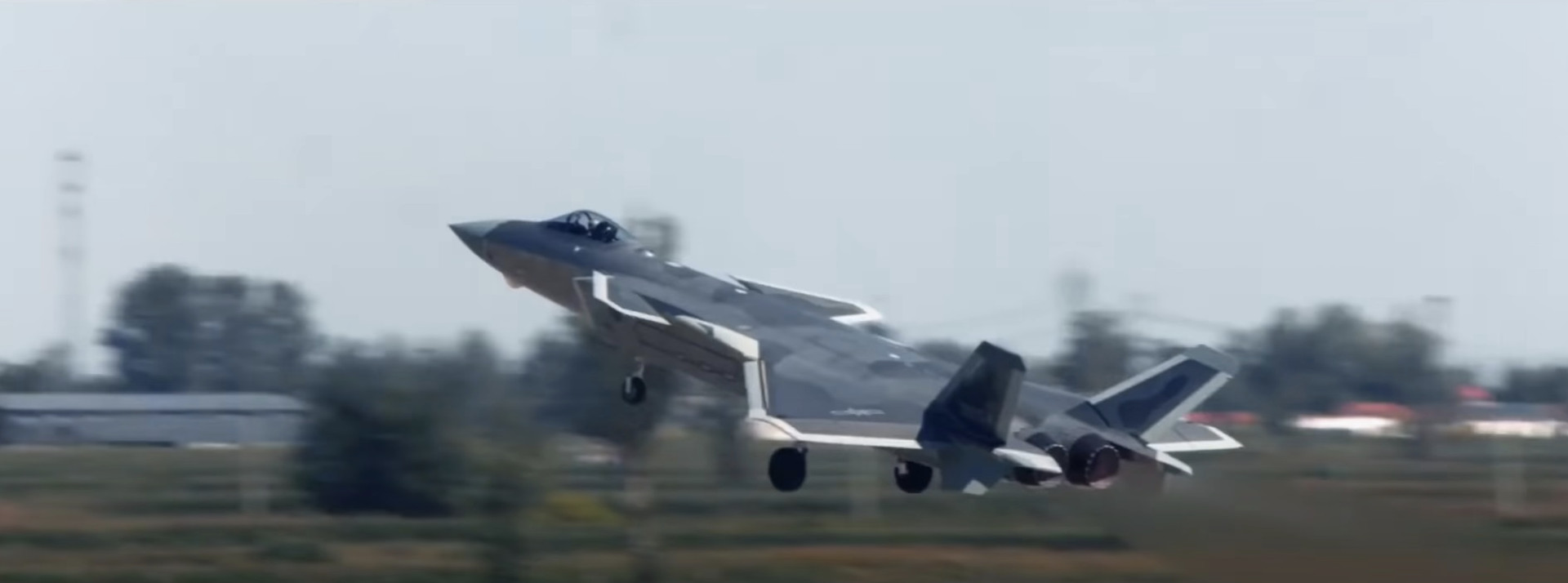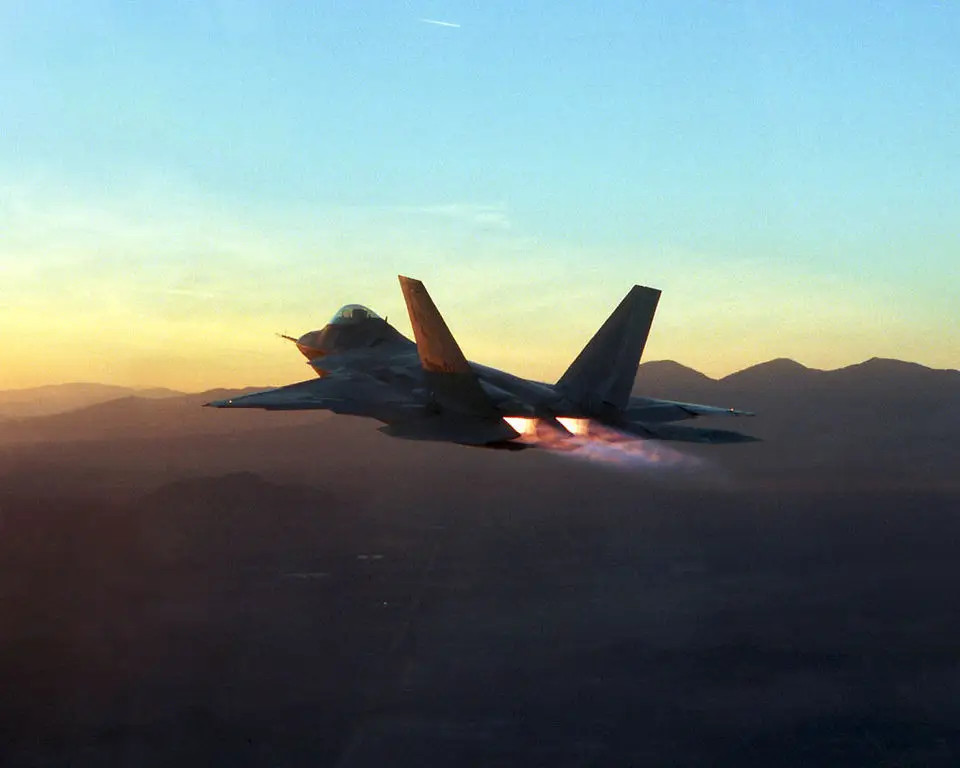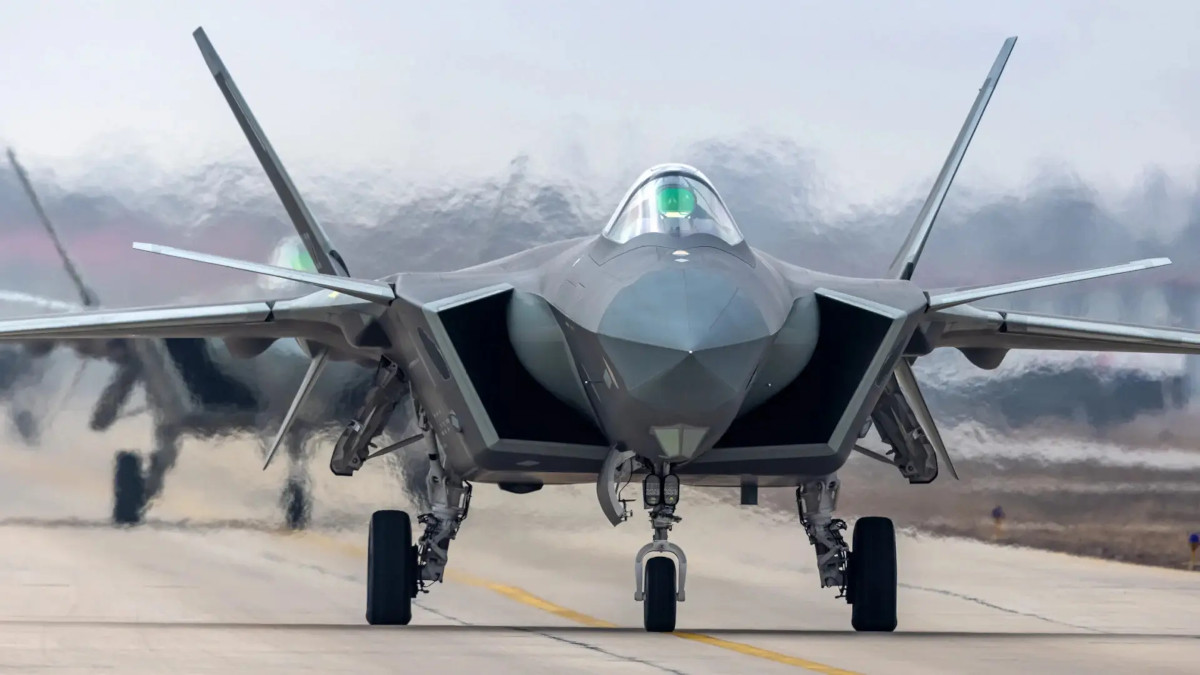There are signs that a Chinese J-20 stealth fighter has flown for the first time with two new indigenously developed WS-15 jet engines installed. If true, this would be a significant milestone in the continued development of the J-20 design and the WS-15 turbofan.
Pictures and videos reportedly from the test flight have been increasingly circulating on social media. The flight is said to have taken place yesterday and looks to have been conducted from the manufacturer Chengdu’s main test airfield, which is co-located with its production plant in its namesake city.
The quality of the imagery makes it difficult to independently determine conclusively if the J-20 in question indeed has WS-15s in place of the WS-10-series turbofans that now generally power these jets. The original J-20 prototypes and initial production examples were powered by Russian-made AL-31 turbofans. The easiest way to tell for sure that the reportedly re-engined J-20 has WS-15s would be to get a close look at the exhaust nozzles.

“What I find interesting is, when I saw that video it was one of my first impressions, the sound is different to a WS-10C, more of a dull, deep rumble,” Andreas Rupprecht, a Chinese military aviation expert and contributor to The War Zone, wrote on Twitter after watching a clip of the reported test flight.
Pictures of the reportedly WS-15-powered jet after the conclusion of its flight do show it receiving special attention. One image also shows a banner where the number 15 is visible, as well.
Hard details about the WS-15, the development of which reportedly traces its roots back to the 1990s, are limited. No images of a prototype or full-scale mockup appear to have emerged publicly to date. Media reports over the years have said that prototypes of the engine have been capable of producing at least 36,000 pounds of thrust using an afterburner and that the ultimate goal is to achieve a thrust rating of 40,000 pounds.
The most powerful afterburning WS-10 variants known to exist now are reportedly in the 32,000 to 35,000-pound maximum thrust class. Variants of the WS-10 with thrust vectoring capabilities have been developed, as well, and could be a feature on future versions of the WS-15, too.
There have certainly been rumors that a WS-15-powered J-20 is coming for some time now. At the same time, there have been a number of indications in the past year or so that this has indeed getting closer to becoming a reality.
In March 2022, reports said that a WS-15-powered J-20 had flown, although only one of these engines was believed to have been fitted at that stage of testing. Then, in December 2022, images appeared online showing what looked to be an example of an improved J-20 variant. It would make sense that the new version would include upgraded engines, among other features. The new J-20 variant is often referred to as the J-20B, though this appears to be at best semi-official. It should not be confused with the two-seat version of the baseline J-20, which appeared publicly for the first time in 2021 and is also often called the J-20B.
“The mass production of WS-10 and WS-15 [engines] delivery has been achieved,” Zhang Yong, a project director at the Beijing Institute of Aeronautical Materials, part of the state-owned Aero Engine Corporation of China (AECC), said at an event in March 2023, according to a report from Janes. Zhang added that WS-15 serial production came after his institute “tackled all bottlenecks” from “a technical point of view.”
FlightGlobal separately reported at that time that Zhang’s comments had also hinted at progress in integrating the WS-15 onto the J-20 specifically.
With 4,000 pounds more thrust or more each than the J-20’s existing WS-10s, WS-15s could give these already quite capable jets a significant boost in performance. At least on paper, this could make the J-20 more powerful thrust-wise than either of the other two fifth-generation fighters in widespread service today, the U.S. F-22 Raptor and F-35 Joint Strike Fighter.
The F-22’s two Pratt & Whitney F119s each have a thrust rating of around 35,000 pounds at full afterburner. The afterburning versions of Pratt & Whitney F135 used on the F-35A and C variants are rated up to 43,000 pounds, but those aircraft only have one engine. The F-22 is particularly well known for its speed, including its ability to ‘supercruise’ at supersonic speeds without the need to use its afterburners, as you can read more about here.

It isn’t clear how the WS-15’s fuel efficiency may compare to the WS-10 series. If the new engines offer an improvement in this regard, this could be another boon for the J-20 and the longer-range missions it was clearly designed to execute.
For the U.S. military, at least, the J-20 represents one of the top air combat threats driving planning today. American officials have said that they’re not worried, necessarily, about the J-20 and its growing capabilities so long as modernization efforts continue apace. The U.S. Air Force and U.S. Navy are both working to acquire new sixth-generation stealth combat jets, as well as a slew of other advanced air warfare capabilities through their separate, but heavily intertwined Next Generation Air Dominance (NGAD) initiatives.
“It’s [the J-20] not anything to lose a lot of sleep over,” U.S. Air Force Gen. Kenneth Wilsbach, head of Pacific Air Forces, the service’s top command in the Indo-Pacific region, told reporters in September 2022. “Certainly, we’re watching them closely and seeing how they felt and how they operate them.”
“So, we don’t lose sleep about the J-20,” but “if we don’t modernize, then there’s probably the potential to lose sleep,” Air Force Chief of Staff Gen. Charles Q. Brown said separately soon thereafter when asked about his views on the matter in light of the PACAF commander’s remarks.

For China, progress with the WS-15 is important in its own right. Though the Chinese aviation industry, as a whole, has made impressive strides in its capacity to produce stealthy and other advanced crewed and uncrewed aircraft in the past few decades, it has continued to lag behind the West in the development of modern high-performance jet engines to go with them.
The recent integration of new domestically-developed high-bypass WS-20 turbofans on an improved variant of the Y-20 cargo plane has been another example of a possible shift in this regard.
New jet engine developments, including variants or derivatives of the WS-10 with stealthy-looking two-dimensional thrust vectoring exhausts, were a major part of what was on display at China’s 2022 Zhuhai Airshow.
All told, while it remains to be conclusively confirmed, the first flight of a J-20 with a pair of WS-15 engines would be a major, long-awaited, step forward for the Chinese military and the country’s aviation industry.
Contact the author: joe@thedrive.com
